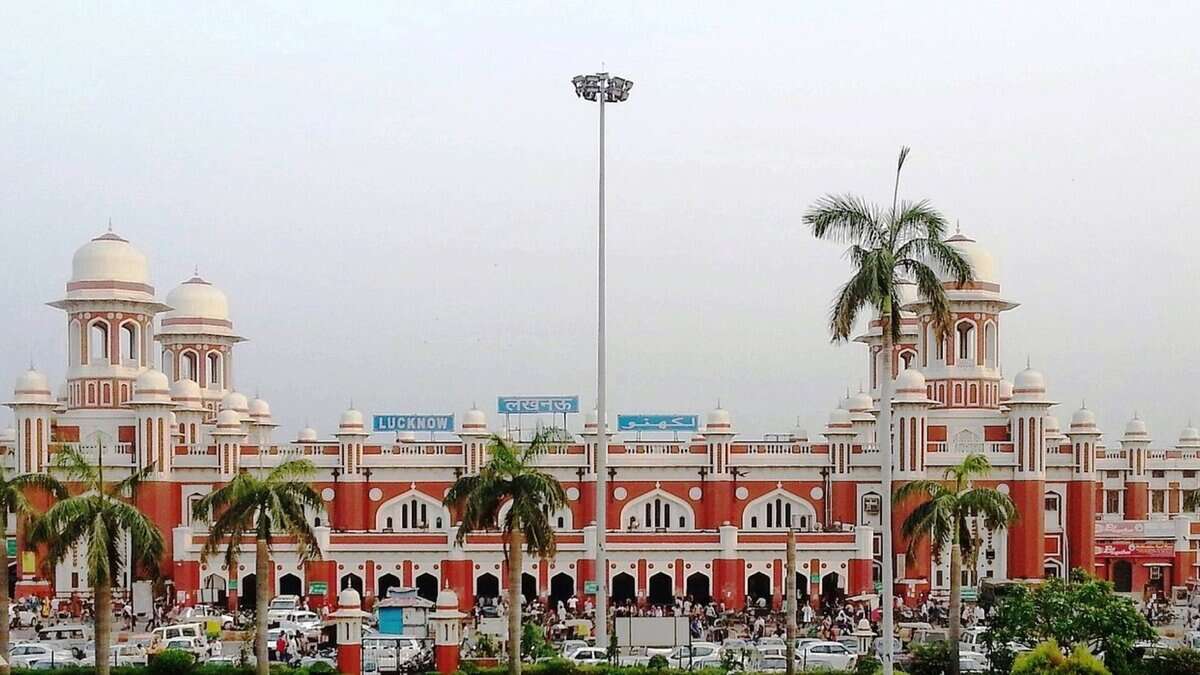
Lucknow, despite being the capital of the most populous and politically influential state, Uttar Pradesh, denotes poetry, kathak, biryani, kebab, and all that awakens one’s sensitivities.
Food for thought: refining sensitivities – poetry, music, and fine art have given way to delectable cuisines. It looks fair enough—who can resist the melt-in-your-mouth Galouti Kebabs of Tunday or the aromatic layers of Awadhi biryani? But to think of Lucknow begins and ends with food is like reading only the first chapter of a brilliant novel.
This city, with its unique blend of grace, layers, and quiet majesty, is a treasure trove of cultural richness. The past seamlessly merges with the present, poetry becomes a part of everyday life, and art, history, and modern ambition coexist in harmony, showcasing Lucknow’s dynamic and evolving nature.
City where the walls whisper
Lucknow is the city where walls whisper the stories. Everywhere you turn, there’s a monument, an arch, a corridor that tells a tale. The Bara Imambara, with its mysterious labyrinth (bhool bhulaiya), or the imposing Rumi Darwaza, look like pages lifted straight from a fairytale. Walk a little further and colonial architecture begins to peek through—churches, gardens, clock towers, each a remnant of British influence layered on Nawabi elegance.
And then you find places like Ambedkar Memorial Park, made of sandstone and symbolism, a statement in itself. It’s a reminder that Lucknow doesn’t just live in the past—it speaks to the present too.
City with poetry in its veins
There’s something about the way people in Lucknow speak—it’s softer, more thoughtful, and laced with an old-world charm. Words like “aap,” “janaab,” and “adaab” aren’t formalities here—they’re part of the city’s DNA.
It’s a city that has nurtured poets, playwrights, and thinkers. Lucknow’s contribution to Urdu literature is profound, having been the nurturing ground for giants like Mir Anees, Yashpal, Amrit Lal Nagar, Hayatullah Ansari, Naiyar Masood, and Irfan Siddiqui. Even today, the echoes of mushairas (poetry gatherings) can be heard in the city’s corners, showcasing Lucknow’s intellectual and creative vibrancy.
Add to that the soulful strains of Hindustani music, tabla rhythms from old music schools, and street performers who carry the legacy in their fingers—and you begin to feel how deeply art runs through this city.
Chikankari carries a soul
You don’t just wear Chikankari—you carry a piece of Lucknow with you. This delicate hand embroidery, done mostly by women in small homes and local clusters, is soft, elegant, and timeless. A Chikan kurta isn’t just fashion; its heritage stitched with care and patience.
And it’s not just Chikan. Crafts like zardozi, mukaish, and kamdani—words you may not hear every day—are alive and well in the fingers of artisans who quietly keep traditions breathing.
A hub of young hearts
Lucknow might wear its history with pride, but don’t mistake it for sleepy. It’s buzzing with a vibrant modern culture that is sure to excite and inspire. Walk through Hazratganj and you’ll find students from IIM-L, Amity, and Lucknow University discussing ideas over coffee. Start-ups are popping up in Gomti Nagar, coding bootcamps are running in quiet cafes, and Instagram reels are being made in every heritage street. The city also hosts regular music and art festivals, and its nightlife is a blend of traditional and modern influences.
This is a city that reads Ghalib and writes Python code. That hosts literature festivals and tech summits. It’s old and new in the same breath. The city’s ability to seamlessly blend its rich history with modern advancements is a testament to its dynamic and evolving nature.
Markets with mainstream
Shopping in Lucknow isn’t about malls (though they exist, too). It’s about conversations with shopkeepers who’ve been there for generations, about fabrics you can’t find anywhere else, and jewellery that tells stories.
You might enter Aminabad looking for something specific but come out with something unexpected—a hand-painted fan, a vintage book, or just a memory. And if you go to Chowk, forget about time—soak in the atmosphere and maybe buy yourself some attar (traditional perfume).
City is growing
Lucknow is growing fast, but not recklessly. In recent years, it’s made space for fresh air and green escapes. Places like Janeshwar Mishra Park and the Gomti Riverfront aren’t just picnic spots—they’re signs that the city values well-being, it wants to grow with balance. The city has also implemented various sustainable initiatives, such as electric buses, metro rails, and better waste management systems, which are slowly but surely reshaping the city’s future.
Electric buses, metro rails, and better waste management systems are slowly but surely reshaping the city’s future.
City rooted in harmony
But more than monuments, art, or even food, what makes Lucknow special is its people. You feel it when someone calls you janaab with a smile, or when a stranger at a market tells you about a hidden food stall or a forgotten poet.
The city’s Ganga-Jamuni tehzeeb—its culture of harmony, of shared festivals, of interwoven lives—still thrives. In a world growing louder and faster, Lucknow remains gentle, steady, and deeply human, making you feel welcomed and embraced.
More than a taste—a feeling
Biryani and kebabs may be the city’s signature dishes, but Lucknow’s essence lies far beyond its culinary richness. It is in the way its people talk, walk, sing, write, and create. It is in the stories told in its courtyards, the rhythm of its ghungroos, the curve of its arches, and the quiet resilience of its new generation.
Lucknow is to be felt, explored, and remembered.



